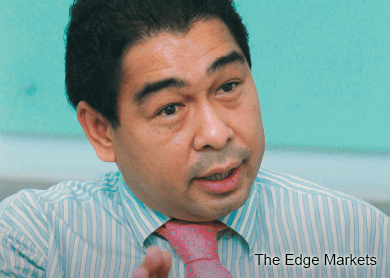
The Malaysian unit trust industry has grown by leaps and bounds in the past decade. But even as the industry thrives, there are systemic issues that need to be addressed. Dinesh Virik, managing director of Novagni Analytics & Advisory Sdn Bhd, which provides fund and investment information, performance analytics and online web tools for intermediaries and investors of Malaysian trust funds, investment-linked funds and private retirement schemes, shares his thoughts on issues in the industry.
Personal Wealth: Have there been any changes in the product offerings? What about new fund management strategies in the last 15 years?
Dinesh Virik: Despite an autonomous market and financial regulations in different jurisdictions, global markets have become highly accessible and somewhat seamless. Today, retail investors can access and invest in various equity and financial markets from the comfort of their offices or homes. The same goes for funds.
A multitude of investment structures and strategies have hit our shores since 2000. From the basic thematic or sector play to feeder funds [investing in a foreign fund], the market has moved past multi-strategy and currency-structured products to absolute return strategies, which is now the current investing flavour.
With the Asean Collective Investment Scheme Passport initiative between Singapore, Malaysia and Thailand, and further liberalisation of foreign fund houses, allowing them to establish a local presence, we do not see investment product innovation dissipating anytime soon.
What we do see as a systemic issue — a growing gap between investor knowledge and product innovation. In other words, there is a mismatch of investment preference — a lack of understanding in matching risk with reward.
In your opinion, what products or services are lacking in the local market?
From the perspective of different investment strategies and geographical access, we do not see slack in investment product or fund mix. For unit trust funds, with over 600 funds in the market having more than 30 different investment styles and strategies, there are sufficient offerings. The product choice is even larger when banking products such as treasury structures and investment-linked products are included.
Unfortunately, client-centric services or advisory strategies have not kept pace with product solutions. Consultative strategies such as investing according to risk tolerance, setting financial or investment goals and monitoring performance are rarely practised in the Malaysian market. While there is a theoretical acknowledgement of the need to by product manufacturers and intermediaries, product-driven strategies continue to be at the forefront of the investment recommendation process.
We see this marketing hypocrisy as a systemic risk, where the abovementioned growing knowledge gap may affect investor confidence in what is principally a diversified long-term investment product. Loss-making investors who do not understand what they have invested in or the risks implicit in the specific investment strategy will paint the unit trust canvas with the same brush.
Much of this syndrome has to do with the traditional one-size-fits-all mentality — where all products fit investors, and no investor segmentation is practised. Methodical advice such as strategic and tactical investment goals is not practised. Single solutions are still the name of the game.
Whose responsibility is it to ensure that investors are properly educated? Is it the responsibility of the fund management companies to tell their clients, or the investors themselves?
The responsibility actually lies in the middle layer, which you didn’t mention, that is the sales intermediaries. The agents — the people who actually sell or recommend those products. That is something that hasn’t changed in the last 15 years. The continual need for remuneration — the more they sell, the more money they make — that is still stagnant.
A person with a smaller amount of money who can’t take risks should not be investing in equities or small caps, for example. The mere fact that he does not know that means he is not a knowledgeable and informed investor. So if the investor gets burnt or loses money, he won’t go back in again, and this has an impact on the industry.
The majority of the unit trust players in this country prefer to keep their investors in the dark, not realising that it is not sustainable. They need to make their investors savvier and more knowledgeable. Once investors understand volatility, they will not react if there are short-term shocks in the market. Unfortunately, that is not the case. There is only a small number of agents who take an interest in their client’s portfolio. The larger part of them don’t, and this slows down the retail growth of the industry.
Do Malaysian investors prefer bond, equity, mixed-asset or multi-asset funds? What is the reason for this preference over the other asset classes?
Referring to the knowledge gap, we think that the preference for a specific asset class is premised upon an investor’s fear or experience of an investment loss, and not an understanding of the risk characteristics of the asset class or fund. For example, the property market skyrocketed after the global financial crisis as individual investors stayed away from the equity and bond markets. Others look to fixed deposits as a cautious alternative, preferring to earn little, but known and safe returns. Consequently, fund manufacturers picked up on this temporary phobia and launched a slew of fixed-interest or fixed-term products, which flooded the unit trust market (see pie chart) over the last six years.
This article first appeared in Personal Wealth, The Edge Malaysia Weekly, on May 25 - 31, 2015.
Save by subscribing to us for your print and/or digital copy.
P/S: The Edge is also available on Apple's AppStore and Androids' Google Play.